Follow Lilach

5 blogging tricks that will build trust with your ideal customers
To convince people to spend their money on your products or services, you first need to earn their trust. And you can do this by producing high-quality and optimized content for your website’s blog.
Content marketing is important, as it not only educates your audience, but it also gives people a reason to feel loyal to your brand. If they see that, instead of simply selling to them, you’re also creating content to solve their problems and answer their questions, they’ll realize you have their best interests at heart.
But to get the most out of your blogging efforts, you’ll need to know how to earn the trust of your ideal customers. So, here are our top tips that will help you do just that.
Answer customers’ questions so they feel understood
If your customers feel like you understand them, they’ll be more likely to trust you. A great way to show that you understand their concerns, needs, and pain points is by using your content to answer customer questions.
To identify which questions you should answer with your content, try using keyword research tools to find out what queries your target audience is typing into search engines. Another way to find relevant customer questions is by asking your customer service team what they get asked the most frequently. Looking through those questions will give you a better idea about the kinds of information your customers need.
To provide you with some inspiration, let’s take a look at businesses that do a great job of answering customer questions with their content.

Our first example comes from MyCanadaPayday, a financial lending company. They have a blog post that explains how Canadians can invest for the long term.
In today’s world, more people are becoming interested in investing and generating a passive income. And, as a financial lending company, MyCanadaPayday knows a lot of their ideal customers will have questions about this topic. So, they’ve created a post to give more information on how people can start long-term investments and provide some recommendations about trending markets and industries to invest in.
This is an excellent example of content that answers their customers’ questions, and it can also help them build trust with their audience seeing as they are providing valuable information for free.
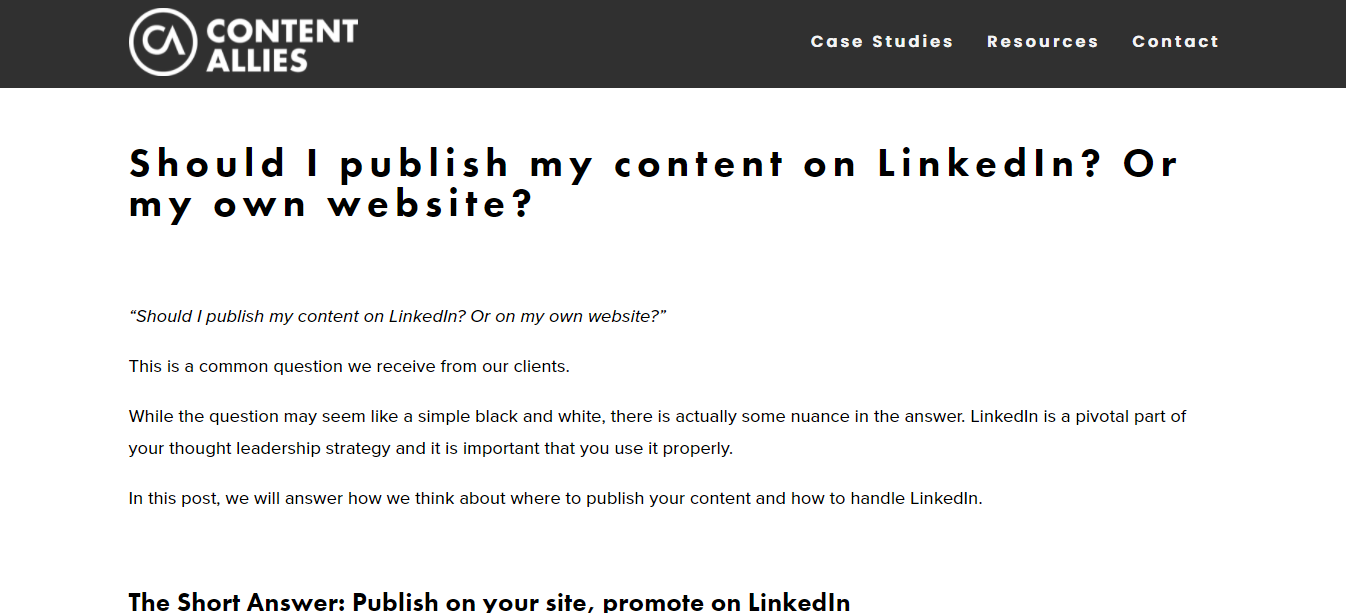
Another example comes from Content Allies, a podcast production agency. On their website, they have a post that explains whether people should publish content on their LinkedIn page or personal websites.
The blog post mentions that the company frequently receives this question from their customers, so they’ve decided to compile their expert opinions into a helpful blog post. This resource covers what people need to consider, and how they can make sure they get the most out of their content. This shows that the company is an expert in the content creation and promotion field, which is sure to build trust with their target audience. This can then lead to more sales for the business.
If you put time and energy into answering your customers’ questions with content, you’ll quickly be able to earn their trust. It’s a great way to show that you understand your customers’ pain points and concerns, so they’ll be more likely to respect and shop with you.
Focus on showing off your knowledge and expertise
Creating website content that positions you as an expert in your field is also a great way to show you’re trustworthy and will deliver what you promise.
It’s also important to create expert content because Google puts a lot of emphasis on E-A-T (expertise, authority, and trustworthiness), a term that comes from their search quality rater guidelines. So, showing off your expertise with your content can put you in Google’s good books and also help you optimize your website for search engines.
To create content that will position your business as an expert in its field, you need to perform in-depth research on whatever topic you are writing about. You should also be able to give practical examples and cite credible resources in your content. Giving examples will allow your readers to develop a better understanding of what you’re explaining, and referencing credible websites will show that your information is high-quality and can be trusted.
Here’s an example of a company that knows how to create content that shows off expertise and knowledge in its field.
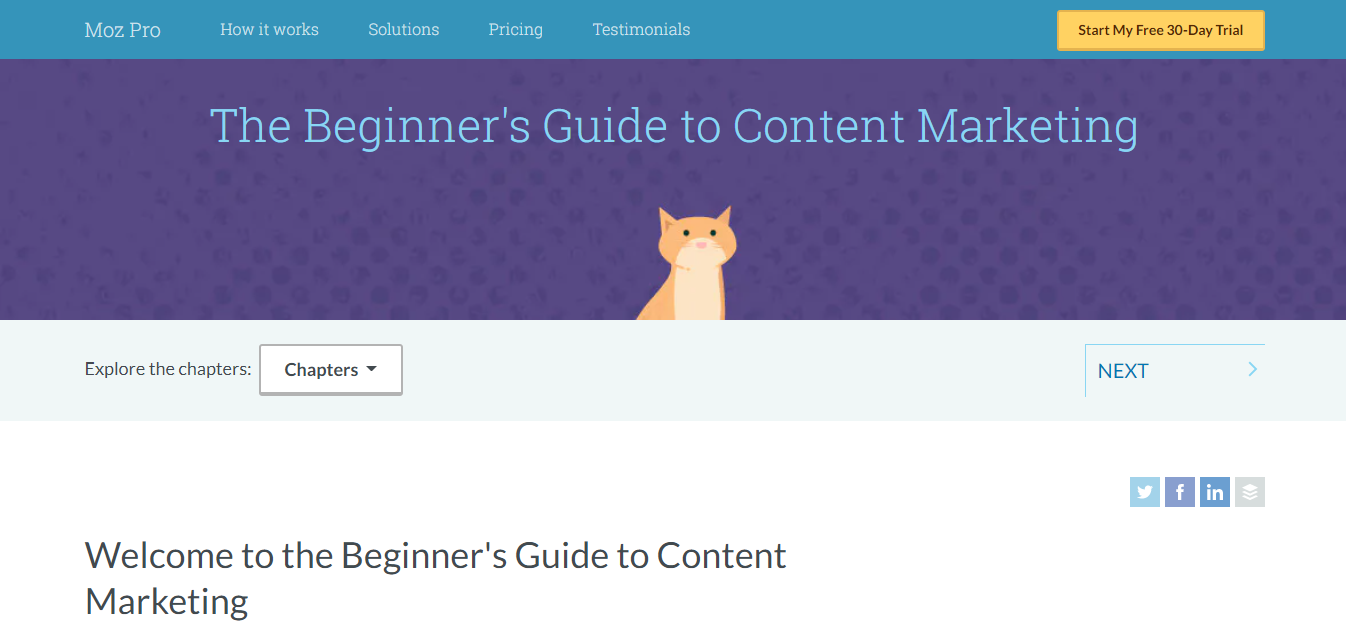
Moz is a company that offers various tools to make SEO and digital marketing easier. An example of expert content that they have created is their beginner’s guide to content marketing.
The post has nine chapters, and it covers everything from assembling the right content marketing team to creating, promoting, and analyzing the results gotten from your content marketing efforts. It’s a great way to show off their expertise in the marketing industry, and it’s also something that can help foster greater trust in their brand.
One thing to take away from this is how important it is to go the extra mile in creating well-detailed and informative content when you want to position yourself as an expert and earn your customers’ trust.
Create tools and resources that provide value for your audience
Another way to provide value and earn your customers’ trust is by creating free tools and resources they’ll genuinely find helpful. This will show that you’re not simply trying to make money from your customers, but also genuinely have their best interests at heart.
This tactic can be quite effective because people tend to trust you more when they see that you genuinely care about helping them solve their problems. Also, they are likely to share your free resources with other friends and colleagues who could become your customers in the long run.
Let’s look at an example of a business that does this well so you can get some inspiration.
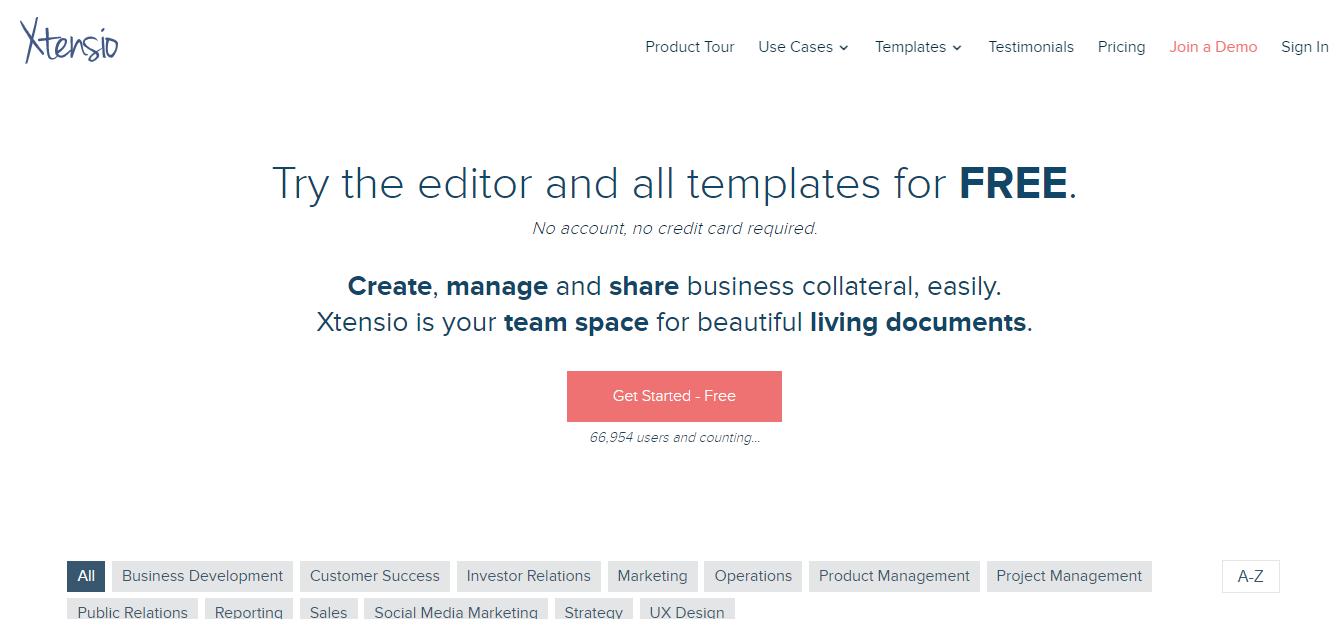
Xtensio is a communications platform for creating and managing official documents or presentations. They have created an entire hub of free tools and templates for their audience to use without any financial commitment. These templates can help with marketing, social media, project management, and more, and will be of great use to their customers.
This is an excellent way of showing people that they care about providing valuable resources to help them in their business activities, and it will cause more customers to have unwavering trust and confidence in their brand.
If you also want to do this for your website, you can start by creating free tools or templates that are relevant to your line of business and will be helpful to your customers. You don’t have to create them all at once, but you can start with one and, from there, you’ll be able to build an entire library of free resources.
Publish how-to guides that will help customers solve a problem
If you want to provide value for your customers and show that you genuinely care about their wellbeing or success, you can create how-to guides to help them solve a problem. When doing this, it’s important that you focus on being informative rather than trying to push your products or services, because the focus should solely be on trying to help your customers.
Earlier on, I discussed how to identify customer questions you could answer with your content. And, when it comes to discovering how-to guide topics, the same process applies. You can decide to use keyword research tools or scan through the queries received by your customer service team.
Another way to get topics for how-to-guides is by looking at your competitors’ websites and identifying the topics they’ve created guides for. This will allow you to see what questions they’re answering for people in your target audience so you can get some inspiration.
Below, I’ve identified some great examples that can help you understand how to publish effective how-to guides that solve a problem for your audience.
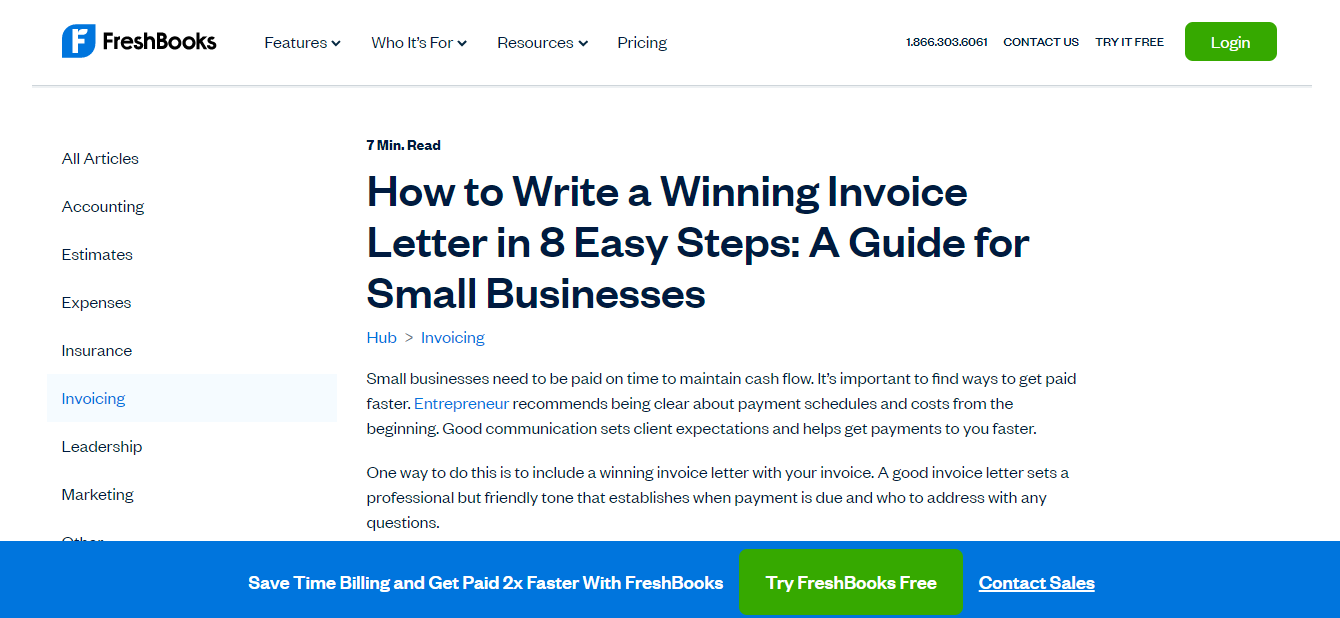
FreshBooks is an accounting solution provider for small and medium-sized companies. And, their blog has a post that explains how to write a winning invoice letter for small businesses.
Their audience is made up of people who are likely to be looking for answers to this question and, by creating a comprehensive, step-by-step guide on this topic, they are helping to solve an issue for many small businesses. Many of their existing and potential customers will be grateful for this post and be more encouraged to keep trusting their brand.
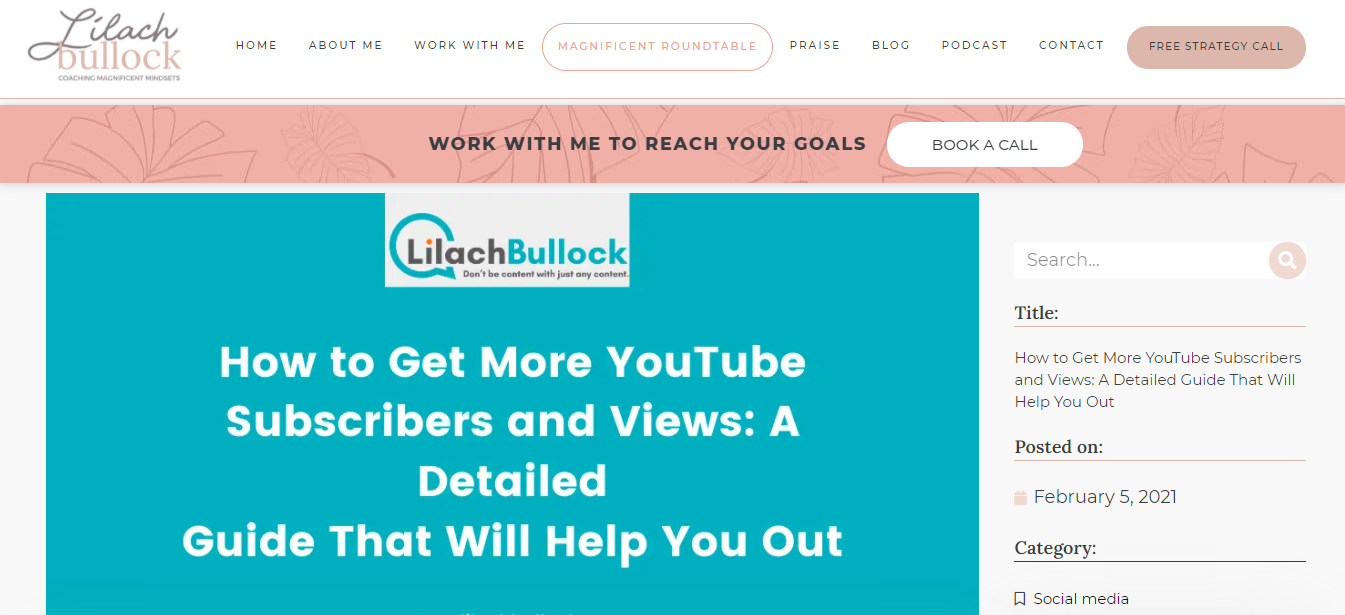
Here’s another example from Lilach Bullock. She’s created a guide that explains how to get more YouTube subscribers and views, because she understands that these can lead to more traffic and income for a business’s YouTube Channel.
Because Lilach is a business coach who helps people improve their business and increase their revenue, this post will definitely be valuable to her audience. She also provides actionable advice that people can implement to see results.
To replicate these examples for your business, try to identify relevant issues in your niche and see how you can help solve these problems for your audience with informative and quality content.
Create content that will help customers make informed decisions
One thing you should know is that customers will be far more likely to spend their money with you if they feel like you’re helping them to make the best decision to suit their needs.
So, creating content that will help them make informed purchases can help to earn their trust. Some of the content you can create for this purpose includes buying guides that outline the features and specifications of your products or services. You can also create comparison pieces that allow you to compare alternative product options so your customers can make the best choice.
And then, there are product demonstrations that display all the functions and benefits of a product. You can also make case studies to show prospective customers exactly how you’ve helped people in similar positions.
To effectively create content that helps people make informed decisions, you need to make sure that your focus is on the customers and not on you. For instance, if you’re creating a comparison piece, you want to make sure you provide neutral and unbiased information about each of the products you are reviewing, especially if your product will be in the mix.
Also, you need to be as descriptive as possible with accurate facts and figures, especially when you’re publishing case studies. You need to be as truthful and informative as possible so your prospects will have all the necessary information that can help them make the best decision.
Let’s look at examples of these types of content to give you some inspiration.
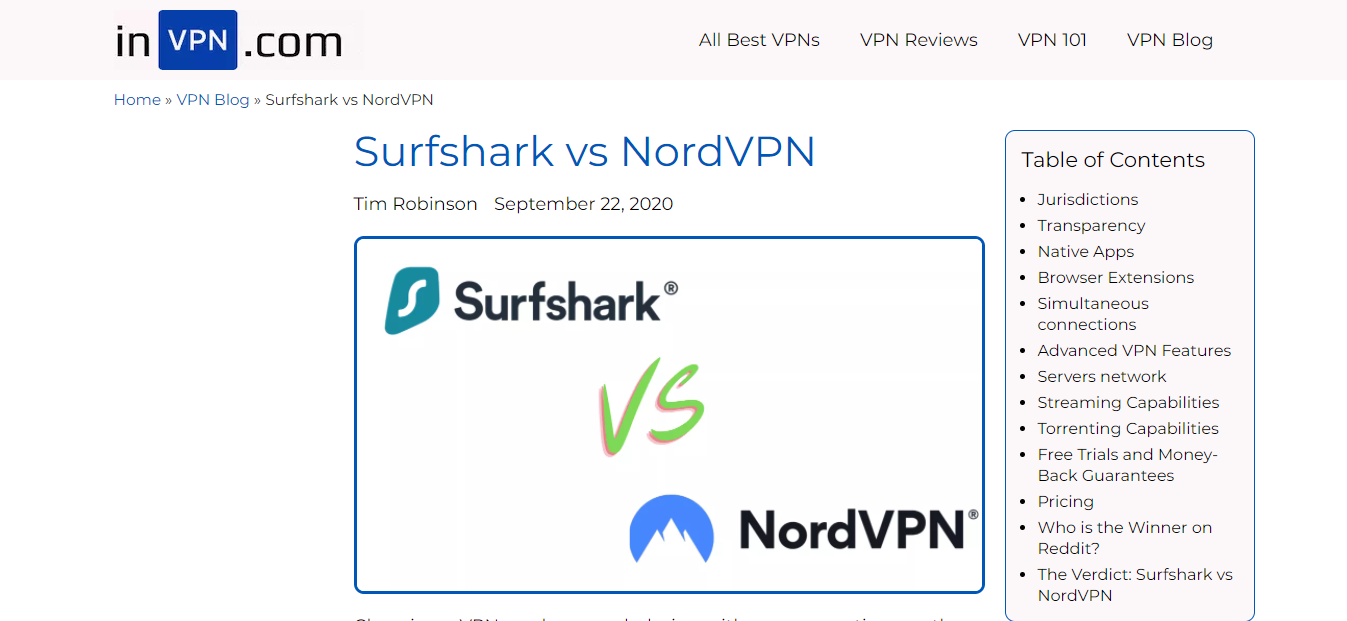
InVPN is an online resource dedicated to providing information about VPNs and other online privacy tools. On their website, they have a post comparing 2 different types of VPNs: Surfshark and NordVPN.
For people in their audience who are trying to decide on what kind of VPN to invest in, this will be a valuable post as it sheds light on the features, capabilities, and pricing of the two options. Because this post provides so much value for their readers, website visitors are very likely to trust the site and should come back for more information in the future.
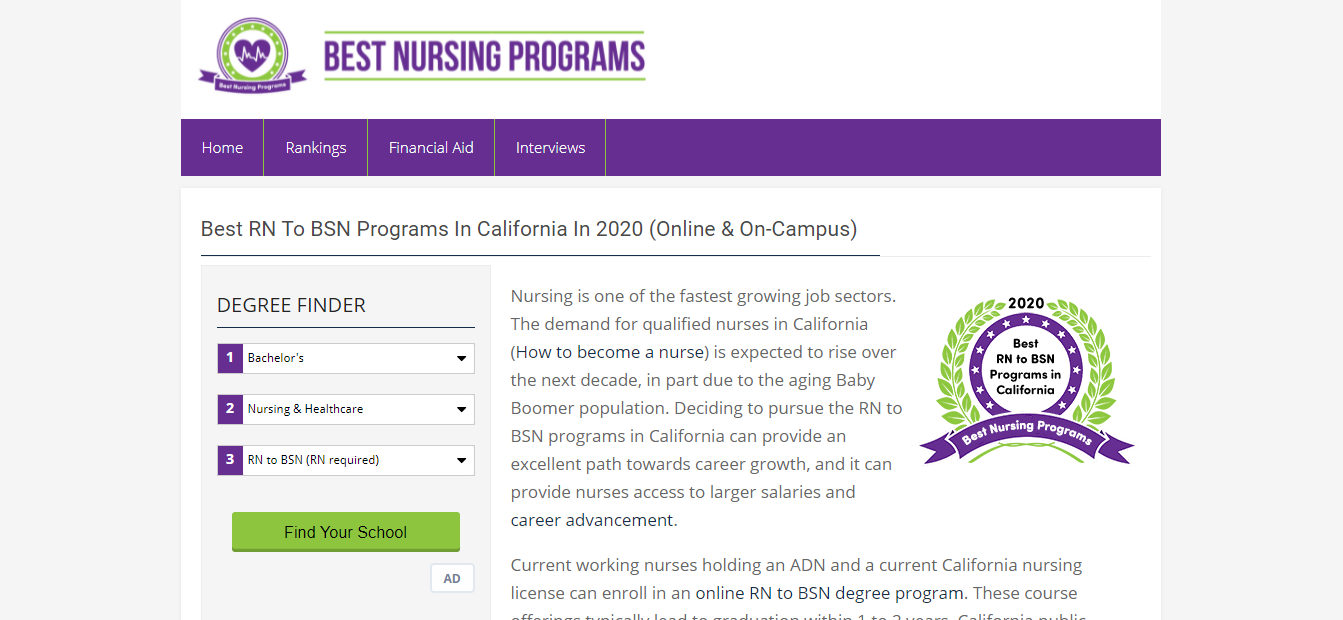
Another example is from a website that provides valuable information about the best nursing programs available to aspiring healthcare professionals.
For instance, Best Nursing Programs has a blog post on the best RN to BSN programs in California. The post lists 30 schools and outlines details like their tuition fees, graduation rates, program lengths, and admission requirements. It’s a resource that will be of great help to people in their audience who are trying to decide what nursing program to enroll in.
What you can learn from these two examples is that you need to focus on providing all of the information someone might need to make the best purchasing decisions to suit their needs. You should appear unbiased, and make it clear that your priority is to help your customers make the most suitable choice.
Summary
People say it’s hard to get strangers on the internet to trust you, but the truth is you just need to make sure you are creating content that shows you understand your customers’ problems and know how to solve them.
You can do this by answering relevant questions, showing off your expertise, creating free tools and resources, or publishing informed posts that help them make a decision. And, if you would like to learn more about attracting new customers and growing your business, you can always use the services of a professional business coach to work out what your next steps should be.

Follow Lilach















